Fowl Cholera in Chickens (2024 Update)
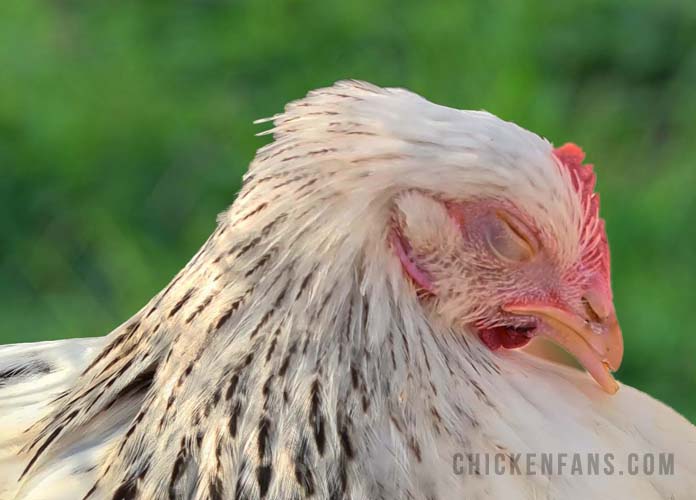

Fowl Cholera is a bacterial disease that can quickly wipe out an entire flock. Chickens can die before you even notice they get sick. Symptoms are horrific, with green diarrhea and chicken combs turning purple. Current vaccines are not able to eradicate the disease. Should you be worried?
Let’s see.
- What is fowl cholera?
- Symptoms
- Treatment
- Transmission
- Fowl Cholera Vaccine
- Can humans get fowl cholera?
- Difference between fowl cholera and human cholera
- Which animals can be affected by fowl cholera?
- Recent Advances In Battling Fowl Cholera
- Summary
What is Fowl Cholera?
Fowl Cholera is a widespread severe bacterial disease caused by Pasteurella multocida. It can cause blood poisoning and chronic infections. Outbreaks have taken out entire flocks.
It targets older birds and is more common in roosters. Fowl Cholera also affects other birds like turkeys, ducks, and canaries. That’s why some call it avian cholera. The bacteria can jump on humans too.
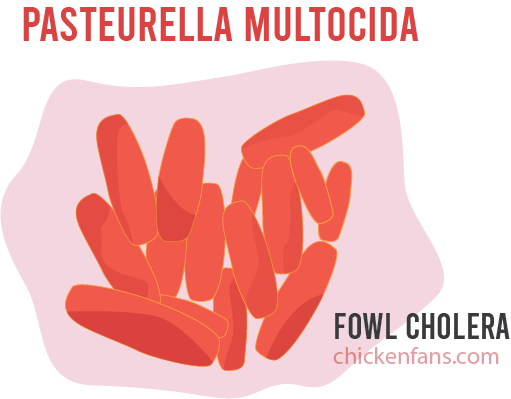
The disease thrives in cold and wet weather conditions. Luckily there is treatment available with antibiotics.
Symptoms
Fowl Cholera comes in two forms: acute and chronic. Both forms have different symptoms.
Acute Form
The acute form strikes so fast that some birds die before showing any clinical symptoms. It’s terrifying to walk into the coop ready for the morning chores, only to find half of the flock has been wiped out.
This rapid onset of symptoms follows a short incubation period, typically ranging from 5 to 8 days, during which the birds are infected but show no visible signs of illness.
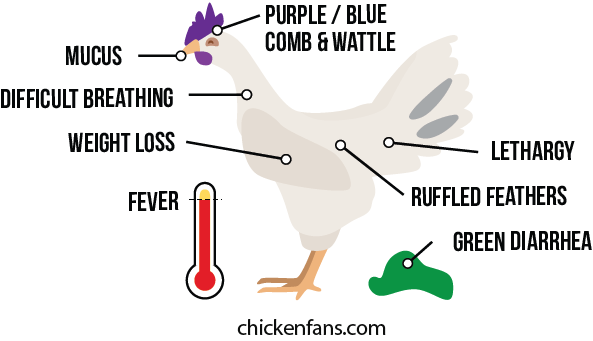
Signs of serious illness may only appear a few hours before death, including:
- watery green or yellow diarrhea
- blue or purple discoloration of the combs and wattles
- fever and ruffled feathers
- extreme weight loss
- general depression and lethargy
- mucus on the beak
- heavy breathing, yawning, and lung infections
Morbidity in this form can be very high, often reaching up to 100%. Almost all exposed birds will become sick. Unfortunately, the mortality rate is also very high.
A veterinarian can notice several other severe conditions, such as vascular issues, burst blood vessels, liquid in the abdominal area, inflammation of the ovaries, and dead tissue in the liver and spleen.
Chronic Form
The bacteria infect multiple parts of the chicken’s body in the chronic form.
These infections cause inflammation and swelling in:
- wattles, face, and sometimes eyes
- ears and sinuses
- feet and legs
The infection can also target the respiratory tract and tonsils, causing breathing problems. When the ears are infected, the infection can spread to the neck, affecting the neck muscles, which causes the head to tilt down. The swelling in the legs and feet causes lameness.
The chronic form of fowl cholera in chickens can be asymptomatic. Chickens can be infected without showing any symptoms.
A chronic infection lasts for about a month, but in some cases, it can stick for years, even with treatment.
Treatment
Treatment usually consists of three steps:
- Separating the healthy birds; oftentimes, infected birds are euthanized
- Thorough cleaning and disinfection of the coop and run
- Treatment with antibiotics
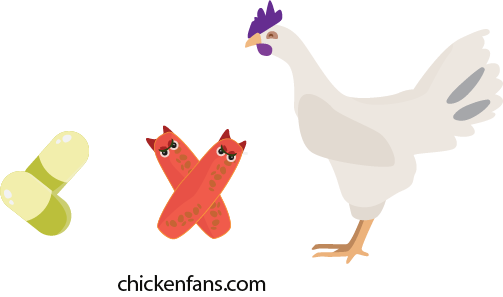
Antibiotics can help to put an outbreak under control, but they can never completely remove the bacteria. The problem is that the infected birds will carry the bacteria for life. When treatment stops, the disease can show up again.
Medication is usually added to the water for prolonged periods to minimize the chances of the disease returning. Common antibiotics are based on sulfadimethoxine and sulfamethazine, both part of the so-called sulfa drugs.

These sulfa drugs are highly effective in killing nasty bacteria, but they also wipe out the beneficial ones. Since sulfa drugs are so toxic, it’s impossible to eat the eggs of chickens getting the additives.
Other classes of antibiotics that are effective include tetracyclines, erythromycin, streptomycin, and penicillin. Unfortunately, using antibiotics to treat the chronic form is ineffective.
Due to the complexities involved with the treatment of fowl cholera, many chicken keepers choose to depopulate completely and start over with a new and healthy flock.
Transmission
The fowl cholera bacteria prefer cold and wet weather. Outbreaks are usually seen around fall and during winter.
Fowl cholera can be introduced in a flock in a couple of ways:
- wild birds: excretions of wild birds
- rodents: infection by rodents that feed on infected dead birds in the wild
- dogs and cats: dogs and cats carry the bacteria in their mouth and under their nails; chickens can get infected after a fight
- clothes: the bacteria can survive long enough on clothing, shoes, and tools to be carried into the chicken coop
When the disease has entered the chicken coop, it spreads from chicken to chicken.
- contaminated food: the bacteria live in the chicken’s droppings; any contaminated food or water will pass on the bacteria
- direct contact: fowl cholera can hop over when chickens come in close contact
- via the air: via small tiny liquid aerosol particles in the airflow via the chicken’s breath
Fowl Cholera Vaccine
Vaccines against fowl cholera in chickens are available but can not completely rule out the disease. Vaccination is not always standard and is usually only applied when fowl cholera is present in the area.
There are currently two kinds of vaccines on the market:
- attenuated live vaccines: these vaccines contain the actual fowl cholera bacteria, but in a weakened form
- adjuvant bacterins: these are vaccines where the antigens are killed and cannot provoke the disease. The adjuvant is an extra ingredient that helps to boost the immune system of the chicken
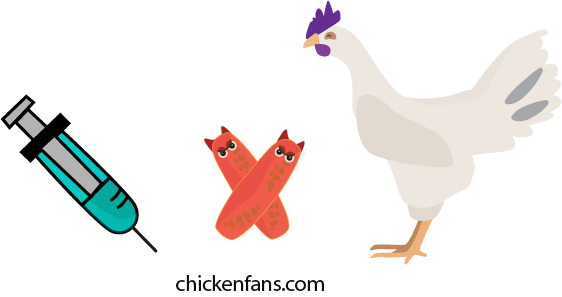
Chickens are typically vaccinated through an injection in the wing web, while turkeys get the vaccination via their water supply. However, obtaining vaccines can be challenging for small flocks of backyard chickens. Regardless of the flock’s size, birds must be healthy at the time of vaccination.
In November 2021, researchers from Ethiopia published some promising results on developing a new vaccine. In the tests, their gamma-irradiated fowl cholera mucosal vaccine provided 100% protection against fowl cholera, compared to the 85% of the adjuvant bacterin vaccine they currently use. They reported an all-around boost in antibodies in the saliva as well as in the blood of the chickens.
Further research and testing are needed, but the preliminary findings show promising results for a new vaccine without all the drawbacks of the existing vaccines.
Can humans get Fowl Cholera?
Yes, humans can get fowl cholera. The disease is not the same as human cholera, and the symptoms are less severe for humans than for chickens. Infection typically starts with bites and scratches from dogs or cats and can spread to our eyes and throat.
In rare cases, the disease can spread to other body parts, such as the lungs or abdominal areas. Worst case, it can even reach the brain and lead to meningitis.
Apart from the infections, another complication is blood poisoning by bacteria. This is a life-threatening condition that can trigger extreme responses in our immune system, with the potential of a septic shock.
With all these potential dangers, it’s essential to be highly secure and hygienic when managing sick birds.
Difference between Fowl Cholera and Human Cholera
Although they are both bacterial diseases, fowl cholera is caused by Pasteurella multocida whereas human cholera is caused by Vibrio cholerae. These are both gammaproteobacteria with the same size and outlook, but these are the largest family of bacteria on earth. In essence, they are two different bacteria.
Human cholera is an infection of the intestines that causes diarrhea and dehydration. It’s spread via unsafe water and undercooked seafood.
The bacteria are only infectious to humans and won’t jump on animals, whereas Pasteurella multocida can affect multiple species.
Which animals can be affected by Fowl Cholera?
Fowl Cholera is the name of the disease that develops in chickens due to the Pasteurella bacteria.
These bacteria can infect multiple animals and cause multiple diseases, with different names:
- Fowl Cholera: primarily in chickens, turkeys, ducks, geese, raptors, wild birds, and canaries
- Atrophic Rhinitis: in pigs
- Bovine Hemorrhagic Septicemia: in cattle and buffalo
- Bacterial Infection: humans
Recent Advances In Battling Fowl Cholera
In 2023, Indian researchers of the IISER Kolkata institute proposed a novel approach to reduce the virulence of Pasteurella multocida, the bacterium responsible for fowl cholera. This approach uses gene cloning to structurally modify the bacterial HA capsule, which plays a key role in the bacterium’s ability to evade the host’s immune system. By altering the HA capsule, the modified bacterium may have reduced virulence, potentially leading to more effective vaccines or treatments.
Later that year, a study on ducks investigated a combination vaccine in the battle against Fowl Cholera. This vaccine includes a live attenuated duck enteritis virus and a recombinant outer membrane protein of Pasteurella multocida. The study found that this combination vaccine was effective in protecting ducks from fowl cholera, suggesting a potential new approach in vaccination strategies against this disease.
In 2024, Egyptian researchers published a novel approach to vaccine development in the Journal of Advanced Veterinary Research. The study focuses on creating a vaccine derived from chicken embryos, specifically an inactivated bacterin, which was evaluated for its effectiveness against Pasteurella multocida.
All these recent findings could have important implications for poultry health and disease management in the near future. For the moment, Fowl Cholera remains a major concern for both the poultry industry and home flocks worldwide.
Summary
Fowl Cholera is a severe bacterial disease. In the acute form, it can kill chickens before you notice any symptoms.
In the chronic form, it can stick around for years as infected birds carry the bacteria for life. On top of that, these bacteria are contagious to humans. That’s why many chicken owners choose to depopulate and restart with a new flock.
Current treatments based on sulfa drugs are struggling to fight the persistent bacteria. They also make it impossible to eat the eggs from chickens under treatment. New vaccine developments in 2022 are promising and might shed some light at the end of the tunnel.
If you want to read more about chicken health problems, symptoms, and diseases, check out our Health Page. You’ll find a Symptom Checker, a complete list of Chicken Behavior, and an overview of the most common Chicken Diseases. Or go to The Classroom to find a comprehensive list of all Chicken Fans articles.

Dr. I. Crnec is a licensed veterinarian with several years of experience. She has published work on the effect of vitamin supplementation, egg-laying performances of chickens under heat-stress conditions and the effects of calcium supplementation on eggshell strength.























